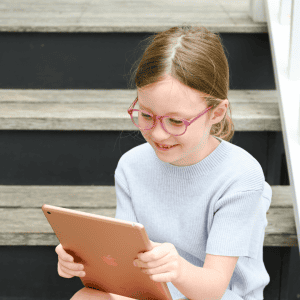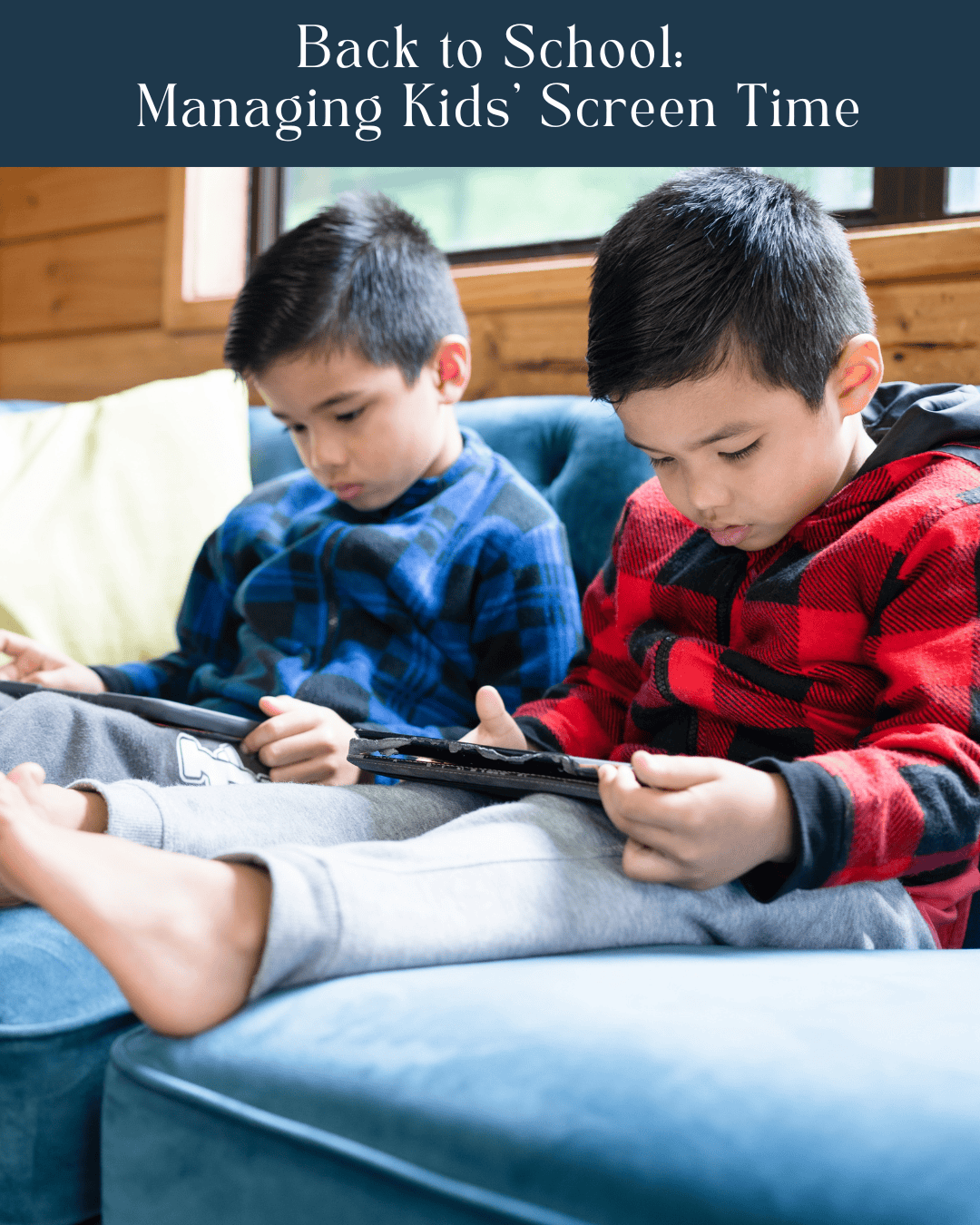With the school year starting, children are spending more time on digital devices for learning and leisure. While technology plays an essential role in education, excessive screen time can impact eye health. Here’s how parents can help manage their child’s screen exposure to maintain healthy vision.
The Impact of Excessive Screen Time on Eye Health
Spending long hours on screens can lead to:
- Digital Eye Strain: Symptoms include dry eyes, headaches, and blurred vision.
- Increased Risk of Myopia (Short-sightedness): Prolonged screen use has been linked to rising cases of myopia in children.
- Reduced Blinking Rate: Staring at screens reduces blinking, leading to dry and irritated eyes.
- Disrupted Sleep Patterns: Exposure to blue light from screens before bedtime can interfere with melatonin production, making it harder for children to fall asleep.

Tips to Protect Your Child’s Eyes
- Follow the 20-20-20 Rule: Encourage children to take a break every 20 minutes by looking at something 6 meters (20 feet) away for at least 20 seconds.
- Encourage Outdoor Play: Spending time outdoors helps reduce the risk of myopia and allows eyes to focus on varying distances.
- Adjust Screen Settings: Reduce screen brightness, increase font size, and use blue light filters to minimize strain.
- Maintain Proper Viewing Distance: Ensure screens are positioned at least an arm’s length away and slightly below eye level.
- Create Screen-Free Zones: Avoid screen use during meals and before bedtime to promote better sleep habits.
- Regular Eye Exams: Schedule annual eye check-ups to monitor vision changes and detect any early signs of eye strain or myopia.

Supporting Healthy Vision for Learning
Balancing screen time with other activities is key to maintaining eye health. Encourage reading physical books, engaging in outdoor activities, and fostering hobbies that don’t involve screens.
If your child experiences frequent headaches, eye strain, or vision difficulties, book a comprehensive eye examination. By taking proactive steps, parents can help protect their child’s vision and set them up for a successful school year.


